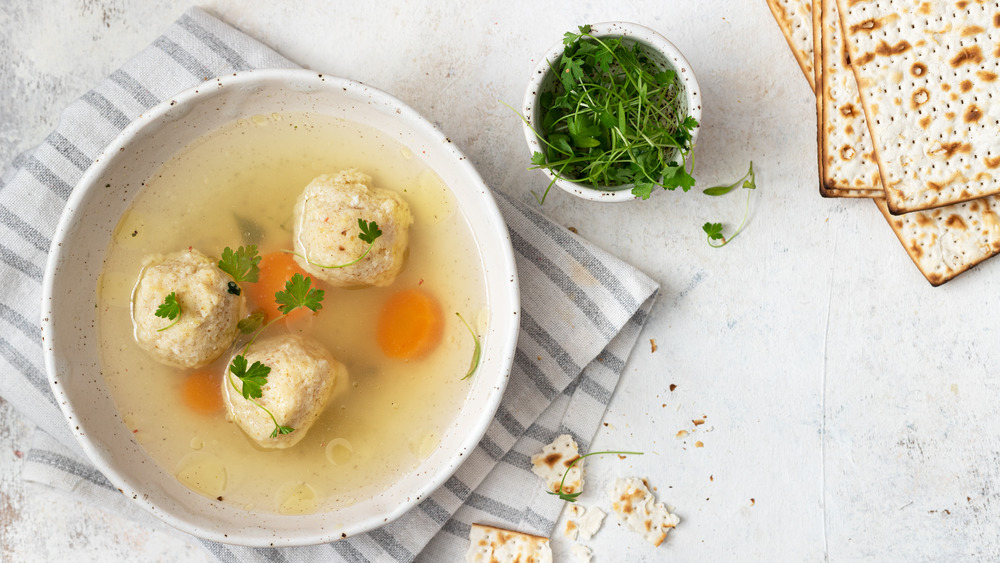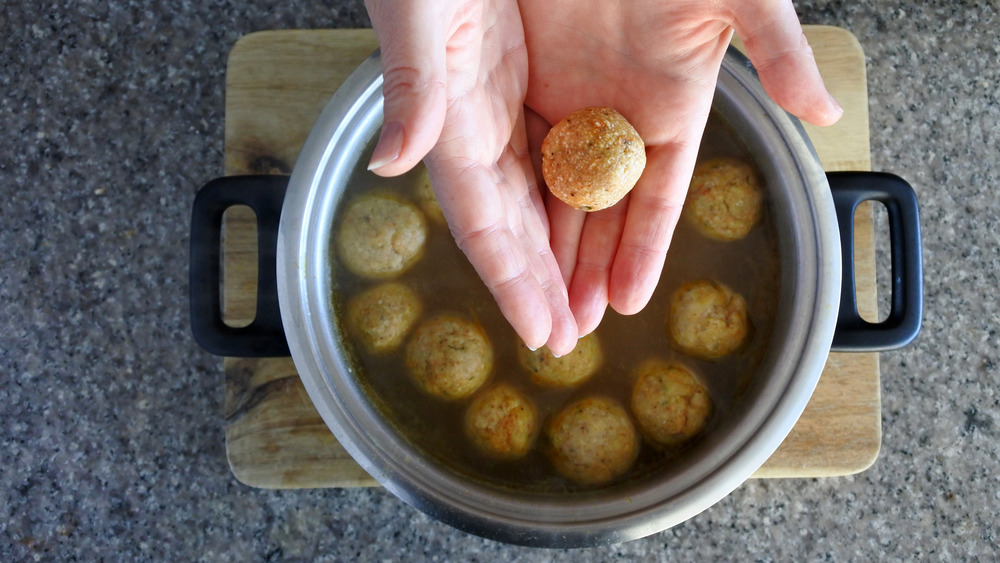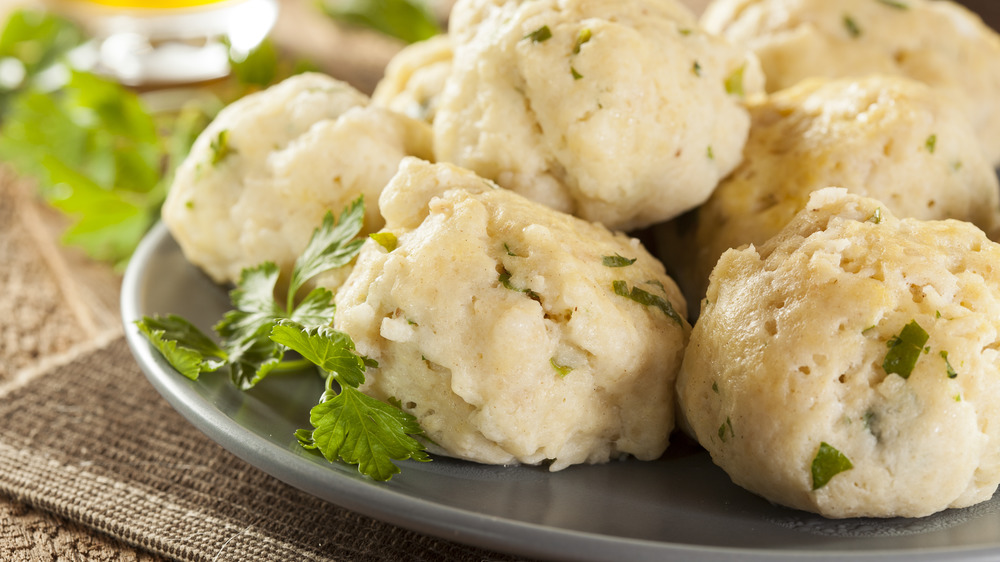The Trick To Knowing When Matzo Balls Are Done Cooking
Passover is on the horizon, and you know what that means: matzo balls upon matzo balls. The traditional Jewish dumpling, made from unleavened bread meal, eggs, fat, and oil, is often served in a flavorful chicken soup this time of year. Toss in some carrots and spices, and you have yourself a Kosher classic worthy of the hype. The leftovers of this hearty soup — if you're lucky to have any left, that is — are usually enough to happily feed a family for the week, without a single complaint (via BudgetBytes).
So how does one achieve the perfect, fluffiest possible matzo ball? The key here, as with any good meal, is a bit of patience. According to The Infinite Kitchen, most people struggle with undercooking their matzo balls because they take "shortcuts" to hurry along the simmering process: "I have never seen an overcooked matzo ball," the outlet notes.
Keep an eye out for floaters
It's an age-old debate when it comes to matzo balls, but most will agree: you don't want any "sinkers" in your soup. According to Taste With the Eyes, a "sinker" is a dense matzo ball that likely wasn't fully cooked before serving. If you're aiming to make "floaters," or light and fluffy matzo balls, then you're going to want to start by looking for one thing: floating.
You should let your matzo balls simmer completely covered for about 20 minutes (and don't open the lid, because that's when they might firm up on you). While that's the average time range to shoot for, according to Cooking Tips, you'll know that the matzo balls are done once they've floated to the top of the soup. Don't panic when they sink first, though — once they hit the bottom of the pot, they should rise back to the top of the broth, perfectly cooked and ready for serving.
Don't serve your matzo balls before slicing one open
After your matzo balls float to the top of your pan, you can finally take the lid off (just don't peek early!). Grab one of the matzo balls and cut it open. The color of the inside should completely match the outside of the ball. If your matzo balls simmered in chicken broth, then they should have a "grainy and yellow look" on the inside, notes Cooking Tips. If you're making the matzo balls on their own in water, they should be a bit lighter and white, but still have that grainy texture to them. The color should be uniform and consistent from the outside to the inside — that's when you know you've mastered the matzo ball.
If you run into a problem where the inside of your matzo ball is a darker brown, then chances are, you've undercooked them. Many people mistake this for burning them, but it's actually the opposite, explains one Quora user. If your matzo balls aren't looking light on the inside, then there's still time to save the soup! Toss them in a larger pot so they have more space to evenly cook, and let them simmer for another ten minutes — just be sure to keep the lid on so you're not stuck with any "sinkers."


